
COMPARED TO ENRICHED WHEAT, WHOLE WHEAT HAS…


COMPARED TO ENRICHED WHEAT, WHOLE WHEAT HAS…

हमारे प्राचीन काल के पास बहुत कुछ अच्छा है हमें देने के लिए। आज भी हम बहुत सी चीजें अपनी दिनचर्या में शामिल करते हैं जो हम अपनी दादी नानी से सुनते आए हैं क्योंकि हम जानते हैं वह बातें या परंपराएं पहले भी और आज भी महत्वपूर्ण हैं। फर्क सिर्फ उन्हें अपनाने में आधुनिकरण का है। आधुनिकता को समझने के लिए परंपरा का ज्ञान होना बहुत जरूरी है क्योंकि उसकी जड़ी वहीं से जुड़ी हुई है। पुराने समय में हमारे ऋषि-मुनियों ने या बाद के समय के वैज्ञानिकों ने तर्क के साथ जो जीवन के नए मापदंड प्रस्तुत किए थे वह आज भी प्रासंगिक हैं। परिवर्तन एक निरंतर चलने वाली प्रक्रिया है जो कि किसी भी परंपरा मे नवीनता लेकर आती है बिना उसके महत्व को कम किए। उसी परंपरा को ग्रीन फ्यूचर प्राइवेट लिमिटेड आपकी रसोई में लेकर आया है बिल्कुल आसान और बेहतरीन इस्तेमाल के साथ। ग्रीन फ्यूचर घरेलू आटा चक्की उसी परंपरागत तरीके से ही किसी भी तरह के अनाज/ मसाले /दालो को पिस्ता है जैसा कि पुराने समय में पत्थर के दो पाटों के बीच में उन्हें डालकर पीसा जाता था। पत्थर से की गई पिसाई अनाज या दूसरे सभी से जाने वाली वस्तुओं के पौष्टिक तत्वों को बरकरार रखती है और आटे को गर्म होने से बचाती है जिससे उसके फाइबर नष्ट नहीं होते। पहले के समय में पूरे दिन के खाने के लिए सुबह ही घर की महिलाओं के द्वारा आटा पीस आ जाता था। उस समय आटे को कई दिनों के लिए पीसकर इकट्ठा करके नहीं रखा जाता था क्योंकि शायद वह जानते थे कि ताजे आटे और पीसकर रखे गए आटे की पौष्टिकता में बहुत अंतर आ जाता है। ताजा पिसा हुआ आटा ज्यादा पौष्टिक होने के साथ-साथ बहुत हल्का भी होता है जो की बूंद के वक्त अधिक पानी सोखता है जिससे आटे की गुणवत्ता कई गुना बढ़ जाती है। ग्रीनफ्यूचर आटा चक्की को इस्तेमाल करना बहुत ही आसान है आप इसे अपनी रसोई के स्लैब पर ही रख सकते हैं। 12″*12″*16″ की इस मशीन से आप बहुत कम समय में किसी भी तरह की अनाज को मनचाहे आकार में पी सकते हैं। इस में प्रयोग आने वाला पत्थर (सेरेमिक कोरेन्डम) आटे को पीसते वक्त ठंडा रखता है। यह पत्थर लंबे समय तक चलने वाला तथा खुद पैदा होने वाला पत्थर है। इस आटा चक्की को प्रयोग करने के बहुत से फायदे में से कुछ इस प्रकार हैं :
1. शुद्धता: बाहर आता विश्वानी में आटे के संक्रमित होने के या उसमें शुद्धता मिलने की संभावना काफी अधिक होती है जिससे आप घर में ग्रीन फ्यूचर ग्रेन ग्राइंडर से आटा पीस कर बच सकते हैं। बाजार से पिसे हुए मसालों में जिस तरह की मिलावट पाई जाती है वह सेहत के लिए बहुत ही ज्यादा हानिकारक होती है। Green future domestic flour Mills की मदद से ना केवल मिलावट को रोका जा सकता है बल्कि घर पर पीसने से मसालों की लागत भी काफी कम होती है।
2. पौष्टिकता: ताजे पिसे हुए आटे में किसी भी अनाज के वह सभी पौष्टिक तत्व मौजूद होते हैं जो स्टोर किए गए आटे में धीरे-धीरे खत्म हो जाते हैं।
3. कम आवाज: इन सभी च चक्कयो में प्रयोग होने वाली elastic bedding को इस तरह से डिजाइन किया गया है कि यह पीसने की समय पैदा होने वाले शोर को बाकी आटा चक्की ओ की तुलना में बहुत कम कर देता है।
4. उत्तम परिणाम: आकार में बहुत छोटी होने के बावजूद इसके परिणाम अविश्वसनीय हैं। इसमें अगर आप कम से कम एक चम्मच अनाज/ मसाले या दाल भी पीसना चाहे तो आप तुरंत ऐसा कर सकते हैं बिना किसी प्रोसेस
लौस के।
5. कम बिजली की खपत: सभी 11 मॉडल्स में छोटी चक्की ओं में 360 वोट तथा बड़ी में 720 वोट की औद्योगिक श्रेणी की मोटर काम करती है जो कि एक यूनिट से भी कम बिजली प्रयोग करके अच्छी रफ्तार में आपको पिसी हुई सामग्री उपलब्ध कराती है।
6. सुविधाजनक: आटा चक्कीओं को प्रयोग करना, उठाना, कहीं ले जाना बेहद आसान है। हर प्रयोग के बाद इसे साफ करने की भी आवश्यकता नहीं पड़ती। अपनी आवश्यकता के अनुसार आप जब चाहे सिर्फ एक बटन दबा कर इसे प्रयोग कर सकते हैं। इसके अंदर लगा हुआ ऑटोमेटिक क्लीनिंग ब्रश अंदर किसी भी तरह का अवशेष रहने नहीं देता जिससे मशीन अंदर से साफ ही रहती है। इस तरह से सभी विशेषताएं ग्रीन फ्यूचर फ्लोर मिल्स को दूसरी चकिकयो के मुकाबले में बेहतर और विशेष साबित करती हैं।
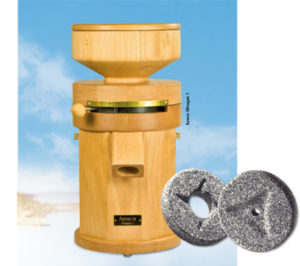
ग्रीन फ्यूचर आपके स्वस्थ जीवन की कामना करता है!!!
Before we proceed further, let’s have an idea what whole grain is? Any grain is mainly sub-categorized into two groups – whole grain and refined grain. Whole grain preserves all three parts called:
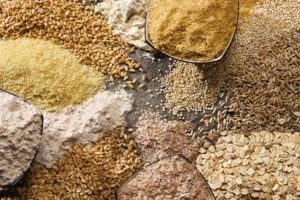
Bran: Outer shell of grain which is packed with fiber, antioxidants and numerous minerals.
Endosperm: After that comes this second or middle layer which generally contains carbs.
Germ: Innermost layer provides plenty of vitamins, protein and plant compounds.
Whereas, refined flours are mostly stripped off germ and bran, leaving only the endosperm to achieve finest texture, color and extra life of flour. Once you develop the habit of consuming whole grain in your dietary, you will find them full of nutrients, nice texture and most importantly the flavor which circulate energy in your body.
Americans health and human services department had issued a dietary guideline in 2005 to include at least three servings of whole grain a day. (Source: Everyday Health.com)
Adding more whole grain over refined flour in your life is a smart choice indeed. It not only fill you up with vitamins and fibers but also satisfy your taste buds without any guilt. Through this blog I intend to take you on a culinary journey with lot more health benefits, enjoying more delicacies to binge on.
Cast a look why one should switch to whole grain flour instead of refined flour while having pastas, breads, buns and tortillas etc.
I think, the above reasons are good enough to encourage you to make the switch, only thing required here is “willingness to change”. To evolve this habit in your daily dietary in an easier and happier way, Greenfuture private limited has taken up the front by introducing its magical table top household flour mills with the pedestal of 12”x12” in numerous beautiful models. These domestic atta chakkis have become an essential gadget in your kitchen to accompany you in serving health, freshness and hygiene without any extra effort or tiring you. These plug and play grinding machines are completely user friendly with unprecedented life and value for money. These atta chakkis use unique grinding process through CERAMIC CORUNDUM, especially designed to maintain the high nutrition value.

Greenfuture domestic flour mills provide you the opportunity to experiment with different grains like, wheat, black gram, corn, millet, barley, buckwheat, rice etc. and spices/pulses with the least quantity you wish to. Now defining the texture or fineness of milling ingredient is possible by moving the lever from 1 to 9. So no more worries to involve the word ‘healthy’ in your life. Go ahead…..for any assistance regarding this we are just a click (www.greenfuturemill.com) or a call (9810558695) away.
Don’t focus on how much you eat, focus on what you eat!!!!!
To learn more about whole grains’ relationship with diabetes prevention and management, we caught up with Dr. Philip Scharper, an ophthalmologist who works with many patients with diabetes complications, and who is also the founder of Serious Oats® hot cereal.
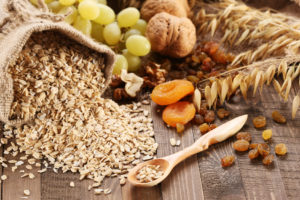
Diabetes is a chronic condition in which the body is not able to metabolize carbohydrates properly, leading to high levels of sugar in the blood. Whether you have diabetes or not, it’s important to make your carbs count. In fact, the American Diabetes Association names whole grains as one of their top 10 “diabetes super-foods.” To learn more about whole grains’ relationship with diabetes prevention and management, we caught up with Dr. Philip Scharper, an ophthalmologist who works with many patients with diabetes complications, and who is also the founder of Serious Oats® hot cereal.
Old-ways Whole Grains Council: What does research tell us about diabetes prevention? Are there lifestyle changes we can make that have been shown to reduce our risk of developing diabetes?
Dr. Philip Scharper: Whether you are at risk or not, staying physically active and maintaining a healthy diet are two of the best ways to keep yourself on the right path. Making healthy choices at meal time is the easiest place to start. Choose a diet rich with fiber and whole grains to help maintain your blood sugar levels and minimize insulin sensitivity. Stay away from foods that are high in simple carbohydrates that will spike your blood sugar levels. And get moving. The body uses insulin more efficiently for up to 70 hours after exercise. So exercising three or four times a week is extremely beneficial in prevention and management of diabetes.

WGC: What are some common misconceptions you hear about diabetes?
PS: It is a common misconception that eating too many sweets is the only way to get Type 2 diabetes. Though sugar plays a role, it is important to understand the whole picture. Learn about what you are eating. For example, the difference between a simple carbohydrate and a complex carbohydrate is a good place to start. Simple carbohydrates like glucose, fructose, sucrose, which are found in fruit juice and corn syrup, are composed of easy-to-digest basic sugars. Complex carbohydrates such as whole grains, brown rice, and legumes are rich in fiber and break down slower in the digestive system. This slower breakdown prevents your body from experiencing spikes in blood sugar which is important in managing Type 2 diabetes. In fact, a recent study suggests that increasing one’s intake of whole-grain wheat, oats, and rye helps to reduce a person’s risk for developing Type 2 diabetes for this very reason.
WGC: As a doctor, it must have been quite an eye-opener to get involved in the food industry as well. Can you describe your journey to creating a line of healthy food products, and what inspires you?
PS: My experience as a physician was the catalyst to the creation of Serious Oats®. I work many days where it is common to go 6 to 8 hours or more without eating… I wanted to find a combination of nutrients that would keep me satiated and fueled during long hours in the operating room or clinic. As an ophthalmologist and retina specialist, I see many patients struggling with the effects of diabetes. Both Types 1 and 2 diabetes are potentially blinding, causing retinopathy, glaucoma and cataracts. I have found that, like me, my patients also struggle to find convenient, healthy and tasty meal options. I am proud to have created something that can hopefully help patients avoid the devastating effects of diabetes.

Glu-ten is derived from “Glue” like property of wet dough. Frequently found in wheat and other grains like Rye and Barley, gluten has two proteins called gluten-in and gliadin, which are exceedingly harmful to an Individual prone to Celiac disease. When wheat flour is mixed with water, the gluten proteins form a sticky network that is glue-like and makes the dough elastic and gives rise to bread.
In short, gluten is a family of proteins found in products like Wheat, Rye, and Barley.
Individuals prone to Celiac disease (Common symptoms are digestive discomfort, constipation, tiredness, headache, depression, and weight loss) should avoid Gluten-free food as protein content in Wheat/Rye/Barley causes intestinal problems. In research conducted by NCBI, it was found that 1% of people of the northern part and 0.1% of people of the southern part of India had Celiac disease and were recommended a gluten-free diet.
To the ones who didn’t qualify the Celiac disease test, but had symptoms of celiac disease, were put on a gluten-free diet to be monitored regularly for their health condition and were termed as “Non-celiac” or with “gluten sensitivity.”
Domestic attachakki is a flour machine used to cereals for all flour purposes. The whole grain flour made domestic atta chakki is packed with proteins, fiber, antioxidants, minerals, and vitamins, which can help control cholesterol, lower blood pressure, and increase energy levels.
For an extensive population, the presence or absence of gluten in your diet is not directly related to your health benefits. What’s important is to have a balanced diet – full of fruits, vegetables, and whole grains regularly. A change in lifestyle is paramount than making a shift to gluten-free food without consultation. One such lifestyle change can also be to consider a domestic attachakki to grind fresh flour for all purposes. Choosing products, which are free of circumvent and are conservative and bidding farewell to an enormous amount of bread, pasta, desserts, and cookies can help you get-in-shape in minimal time with long-term benefits.
The minerals, fiber, and nutritional components in whole grains with gluten proteins help maintain an excellent dietary life along with fruits and vegetables on a day-to-day basis. Wheat flour contains the maximum amount of gluten and wheat being a staple grain in India, the wheat flour should be made fresh with domestic atta chakki at home and be used at its peak.
Reduce fat and sugar content from your everyday life and snap to a healthier dietary lifestyle with the inclusion of whole grain flour recipes made with domestic attachakki to get rid of unwanted fat, which will help you get in shape and shed extra kilos expeditiously. Avoiding whole grains without being diagnosed for “celiac disease” or “gluten sensitivity” can lead to heart diseases in the long run as you are dodging a bunch of minerals, fiber, and nutrients required for the body.
The fresh flour made out of domestic atta chakki for home helps improve the lives of senior people at home and delicious dishes made out of fresh flour can get one inclined towards wheat and whole-grain products.
Amidst growing popularity and cooking delicacies, choosing the flour for your roti’s, pizza bread, cakes, and desserts are getting tricky with multiple options of refined flour made readily available. Hence having a domestic attachakki to grind your flour for all purposes will keep your “flour” free of any preservatives because the refined flour goes through a refining process, and essential nutrients are shredded during the process. Hence investing in domestic attachakki that is trendy with tremendous benefits to suit your busy lifestyle and modern kitchen is a life-changing idea to stay healthier for a family put-together.
Whole-grain, as we already know, is a good source of nutrients with immense health benefits. With growing health concerns and awareness, India is moving towards a healthier you, and young folks of India are investing in kitchen appliances that are trendy with tremendous benefits and attachakki is one such product.

Whole-grain wheat roti’s made out of attachakki /flour mill at home are incredibly fresh, soft, and crunchy when cooked as they are free of any deceives or preservatives that harm and affect you daily.
Below are some of the famous Indian breads, their composition, and how having atta chakki/flour mill at home can make your life healthier?
Whole-wheat flour breads:
Whole-wheat flour roti are the most popular form of wheat roti’s used in Indian cooking. They form an essential part of in India. With surging popularity, whole wheat is the new choice of a middle-age group, which they consciously include in their diet plans. Whole wheat flour roti’s made out of domestic atta chakki are rich in antioxidants, vitamins, and minerals, and are an excellent source of soluble fiber to keep your digestive system, in shape as required.
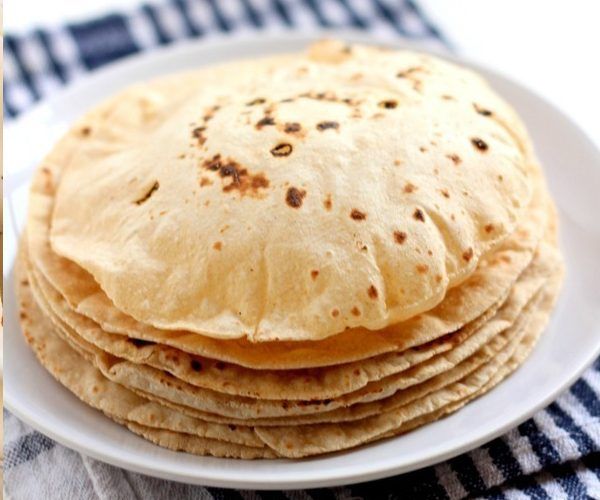
Pearl millet flour breads:
Popularly known as Bajra-ki-Roti, a fabulous choice to add to your dietary plans. Bajra is rich in essential components such as protein, fiber, phosphorous, magnesium, and iron. Due to its slow digestive capacity, it releases glucose at a slower rate, resulting in maintaining healthy blood sugar levels. Add bajra roti made out of domestic attachakki to your lunchtime or make healthy porridge for breakfast to stay energetic all through the day.
Sorghum flour breads:
Popularly known as Jollada roti or Jowar-ki-roti in India is again power-packed with protein, fiber, minerals, and vitamins. A small portion of Jowar has a whopping 22 grams of protein and Jowar being a rich source of protein, should be the most important intake in your diet plan. Flour grinded at home with domestic attachakki can help in weight loss; control blood sugar levels, and is good for diabetic patients. It also is gluten-free by nature.
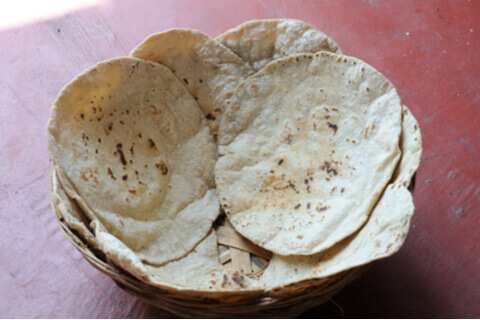
Finger Millet flour:
Commonly known as Ragi in India, finger millet flour is no exception to being a powerhouse for fiber, protein, carbohydrates, and are high in calcium. With cooling efforts it has on your body, you don’t have to look any further on your calcium intake. Add a spoon of ragi flour with atta chakki at home, to a glass of boiling water with a pinch of salt and let it cool down. Drink it to calm and cool your body. Ragi also does wonders when you are on a weight-loss mission, and fighting diabetes
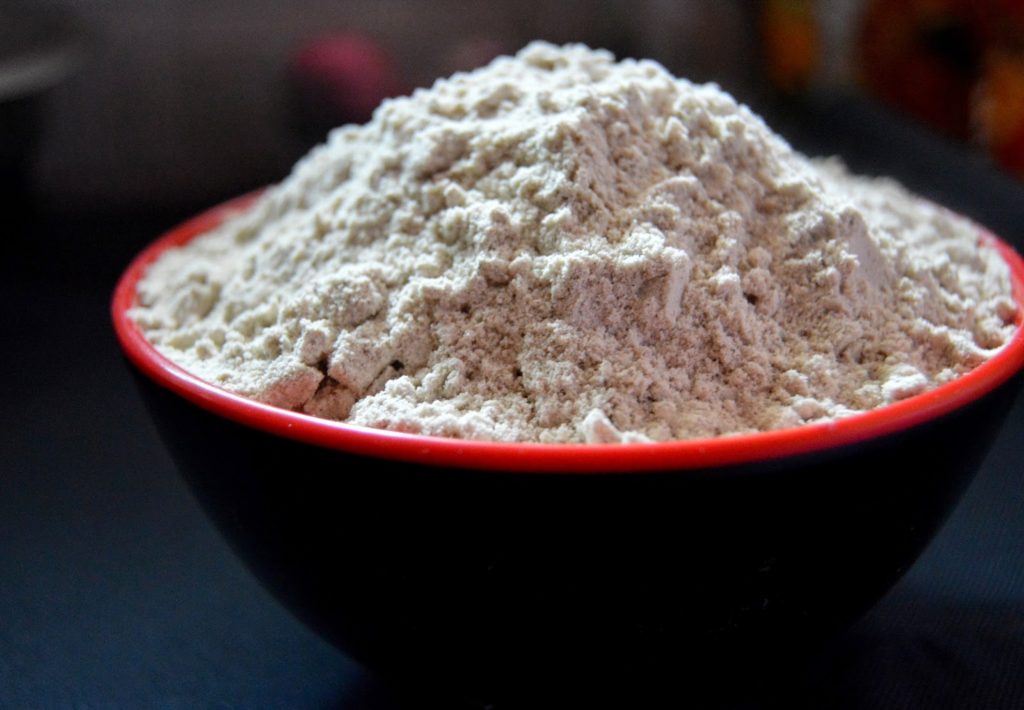
Ragimuddeor Ragi balls is a must-try recipe from the kitchen of South-India.
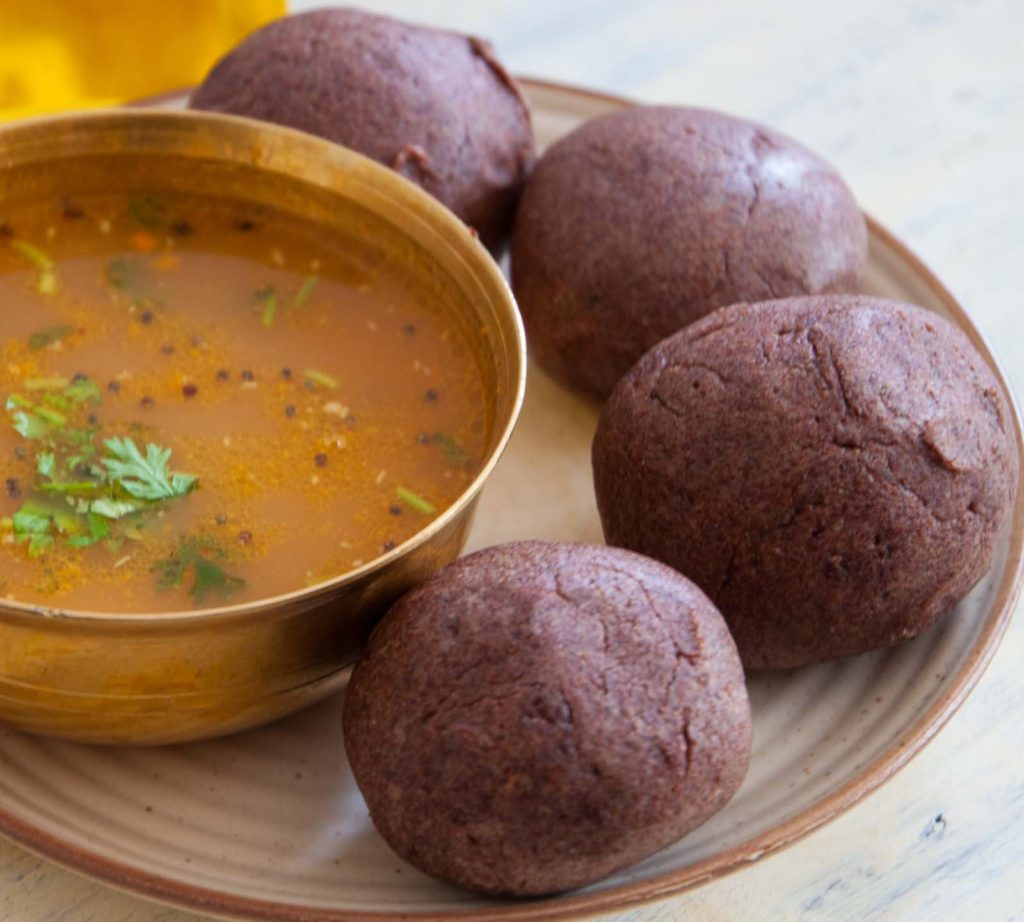
Barley Flour:
Barley has numerous amounts of health benefits and helps in controlling blood sugar levels; lower glucose levels reduces blood pressure and help control cholesterol. Jauki Roti is a great addition to your dietary plans for staying healthy and fit, without compromising on your taste buds. Make delicious roti’s out of homemade flour mill for lunch and serve with pickle or make pancakes for breakfast with grated vegetables to energize your day.

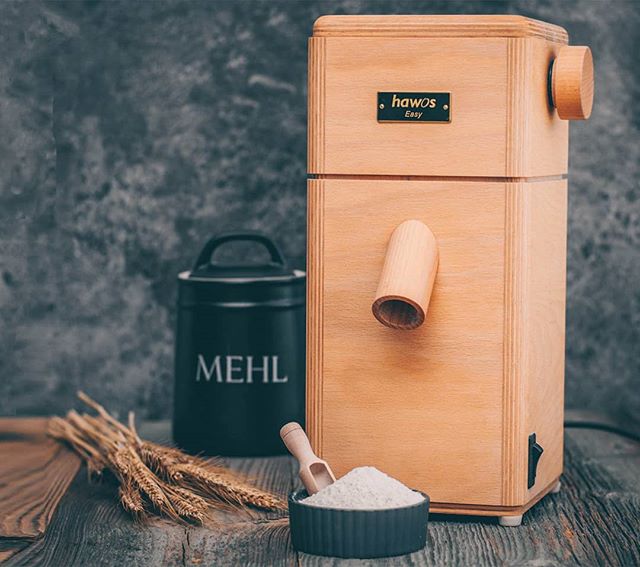
If you have little kids at home you must definitely be loving to bake some delights for them. Baking is better with freshly stone grounded whole grain flour both in terms of taste, aroma and nutrition.
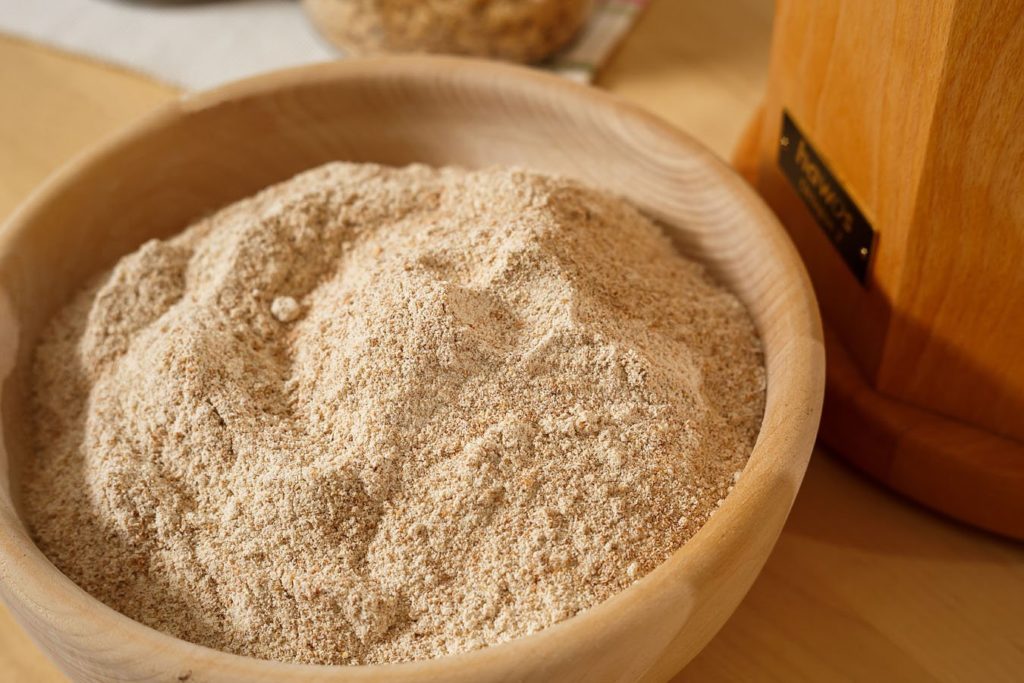
Previously, consumption of baked goodies was considered unhealthy owing to higher carbs and calories in them. However this has changed now a days with people opting out of refined flour and sugar and choosing healthier alternatives like, whole wheat flour and jaggery as nutritious and tastier options.
Now you can choose to freshly stone grind the grains of your choice with Hawos Flour mills right on your own kitchen slab and have an unending supply of healthy and unadulterated flour at your fingertips. Turning baking into a tastier and more importantly, a healthier indulgence
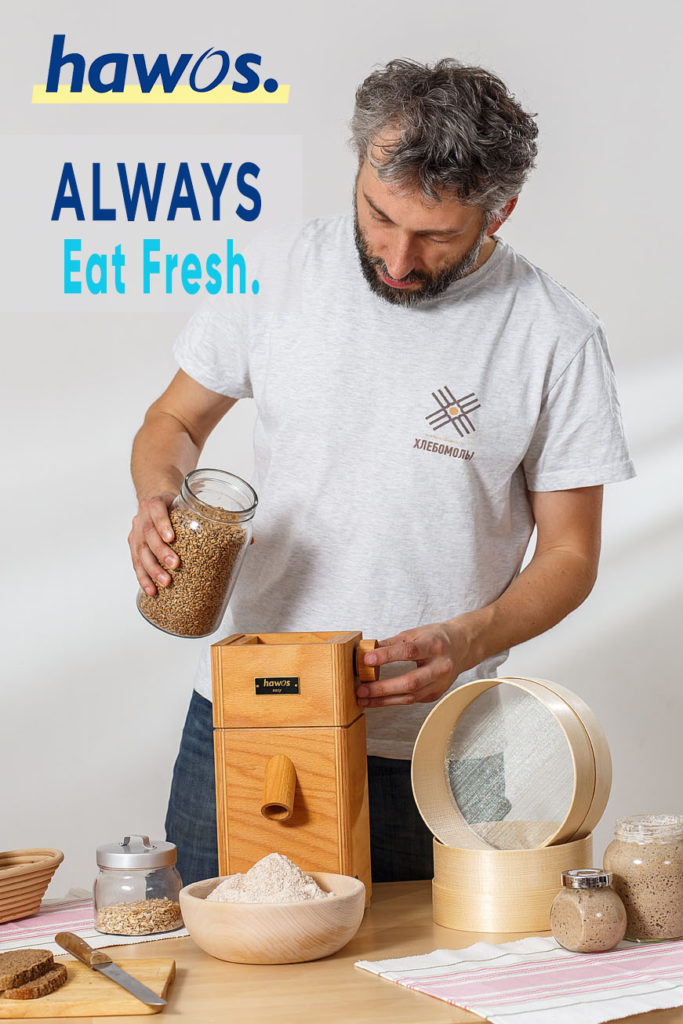
Now since you are aware of the enhanced taste, healthier option and prudence of freshly milled flour, let’s talk about how baking with freshly milled flour performs better than packed or stored flour.
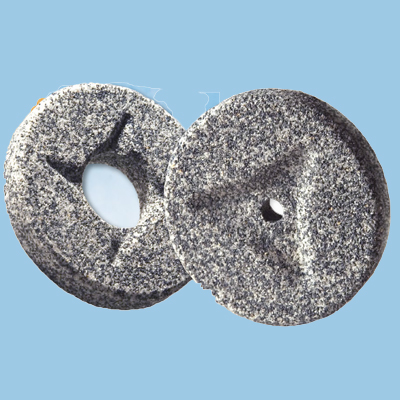
The stone ground method of milling can be used for all of baking needs with different grains. Choosing the particle size of the flour is one more convenience that comes with these mills.
In a nutshell: Give a treat to your taste buds with delicious home baked cakes, breads and more in a healthify way with stone grinding Hawos Flour mills”.
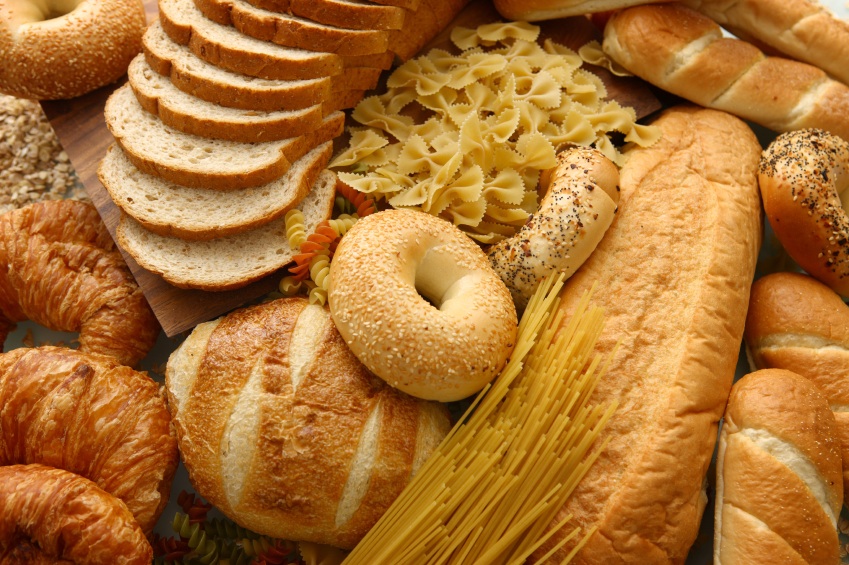
“Eat Fresh, Live Longer”
Here at the Whole Grains Council, we have long been singing the praises of healthy whole grains, so we’re especially delighted to share new research showing that whole grains may help you live longer!
In this exciting study, researchers from the Harvard School of Public Health analyzed data from over 110,000 adults. The scientists found that every one-ounce (28g) serving of whole grains was associated with a 5% lower total risk of death, or a 9% lower risk of death from heart disease. Whole grain intake was not significantly associated with cancer mortality. The researchers of this study conclude “these results are in line with recommendations that promote increased whole grain consumption to facilitate disease prevention.”
[Want to more? Check out the blog we wrote a few days later on the Ordway’s Table.]
Since the founding of the Whole Grains Council in 2003, we have been promoting whole grain foods for their numerous health benefits and their delicious, full-bodied flavor. Check out the other health benefits of whole grain consumption here, or browse our whole grain health studies database.
Wondering how you can get more whole grains in your diet? Look for our Whole Grains Stamp on products at the grocery store, subscribe to our monthly email newsletter, or try one of our many recipes! (Kelly)
If you’re trying to eat more protein, you’re not alone. But if the only things that come to mind when you think “protein” are grilled meats and Greek yogurt, a simple swap for boosting your protein intake could be hiding right under your nose: just switch to whole grains! Most grains have about 25% more protein when eaten their whole form; whole wheat flour, for example, has 28% more protein than refined wheat flour.
Here’s some food for thought: Of the six foods below, which have the most protein?


You might be surprised to learn that all six foods contain about 6 grams of protein each. Since a sedentary man needs about 56 grams of protein a day, and a sedentary woman about 46 grams a day, whole grains can make a significant contribution to your daily protein needs.
hat’s good news, given that so many of us are looking for more protein. According to a 2014 Mintel report titled “Protein Fever,” one-quarter of Americans said they were eating more protein than a year ago. In a 2015 analysis, NPD GROUP said, “It’s protein’s time to shine” and went on to say that heightened interest in protein extends to all age groups.

In a late 2015 Forbes.com article, Phil Lempert predicted that, “In 2016 we will see new kinds of proteins that are more sustainable and affordable than animal sources. Algae, nuts, vegetables, yeast and even insects will be used as ingredients to up the protein punch.” And sure enough, a few manufacturers are responding by adding cricket flour to boost protein content. Or adding peanut flour to brands that never contained it before, to the consternation of some with peanut allergies.
Given that companies are looking for a protein punch in every place imaginable, it is only a matter of time before manufacturers embrace the added value of whole grains, rather than trying to disassemble nature and put it back together again. Especially since whole grains also boast a host of other taste, environmental, and nutrition benefits.
Designer mill with corners and curves
The Oktagon features a new appearance from every angle. As the light hits the different angles of the housing, the solid beech surface texture shows off its natural beauty. Luminescent at times and at others in dark velvet. The interplay of the angular and curved elements creates an exciting yet equally harmonious design. In spite of its utter beauty, performance isn’t sacrificed in the least. Whether a compact Oktagon 1 or a large Oktagon 2, it is versatile and convenient to use thanks to its powerful motor and exceptionally low noise emission.

Eight sides – eight good reasons
1. Solid housing made of solid beech wood
2. A design that will bring joy for decades
3. Single-handed operation
4. Robust and powerful industrial motor
5. Corundum ceramic grinding stones with 70 mm diameter
6. Low noise development at great output speeds
7. High quality craftsmanship goes into every part
8. 5 years warranty and excellent service
If you are looking for a timeless design, combined with easy single-hand operation, you’ll love the hawos Oktini.
The classic beauty for fans of straight-forward objectivity

The flour mills Billy, Queen and Mill present them – selves in the same shape but with housings made from different materials.
The hawos Mill is made of solid beech wood, a linseed oil varnish protects the surface and optimally accents the lively grain of the solid wood.
High-grade plywood is used in the housing of the Billy and Queen models. Special gluing of the individual layers of the housing guarantees a particularly high degree of stability. Our plywood presents itself with avant-garde reserve – in birch with Billy and beech with Queen.
Billy, Queen and Mill are each available in a compact construction featuring a 360-watt motor or the more powerful and larger variant with 600 watts

Opinions about the ‘best’ way to fuel your body for optimal health and longevity will always exist. Conflicting advice about what you should, and what you shouldn’t, eat is hard to avoid. With a new dietary villain around every corner and new panacea behind every door – it’s easy to get exhausted and feel lost in the chaos!
For many, the term ‘diet’ conjures up the type of eating pattern encouraged by this narrative – one of exclusion, extremes, and restrictive, rigid plans. However, the top 10 overall diets of 2019, as ranked by The US News and World report, highlight a different attitude toward the idea of a diet. Though distinct in purpose and direction, they each offer approachable guidelines towards a healthy lifestyle, focusing on the advice you have probably heard before. Though these diets vary, they share commonalities and themes which shine a light on trends in our current health and nutrition landscape at large, emphasizing: whole foods, the energy quality of our food, and chronic disease prevention. We are proud to report – though we can’t say we’re surprised – that whole grains play an active role in the top 10 diets on this list by supporting these larger themes.

More Whole, Plant-Based Foods
These diets echo each other, despite the fact that their end goals range from weight loss to brain health. They emphasize increased consumption of whole, minimally-processed foods. We have all heard it before (probably from Mom), but these diets encourage us to put more vegetables, whole grains, and fruits on our plates. Limited consumption of poultry and low-fat meat is part of the majority of these diets, with the Mediterranean Diet promoting seafood consumption and the Nordic Diet encouraging high-quality meat in the limited instances meat is consumed. The popularity of the Flexitarian Diet exemplifies the success of this light-on-meat attitude – while mostly vegetarian, it makes room for animal protein when the mood strikes.
Energy Quality
Energy quality is a slightly different way to categorize the food we consume. Highly-refined and fatty foods contain a concentrated punch of energy in a small package – meeting a large portion of your daily energy requirements with just a few bites. This can restrict the diversity and volume of higher-quality foods consumed over the course of the day, and can easily lead to an overconsumption of energy.

The Volumetric and the Mayo Clinic diets use energy density as the scaffolding for their recommendations. The energy density of a food is its energy content per unit of weight. Plant-based foods tend to exhibit low energy density, with high fiber and water content. Fatty and refined foods, on the other hand, are energy-dense, containing high-calorie counts per unit of weight. As US News and World Report points out, “for about the same amount of calories you could have a quarter of a Snickers bar or about 2 cups of broccoli.” By recommending foods with a lower energy density (like broccoli), these diets limit your energy consumption without reducing the total amount of food you eat.
Whole grains not only have low energy density, but intact whole grains have a low Glycemic Index as well – a measurement which rates how quickly carbohydrates are converted into glucose/energy. Your body breaks down whole grains more slowly than it does refined grains, making whole grains a more sustained energy source for your body. You can learn more about whole grain energy quality here.
Chronic disease
The rising rates of chronic diseases worldwide has reached epidemic proportions, so it is no surprise that these diets focus on the prevention of one or more chronic diseases. The Mediterranean and Ornish Diets focus on heart health, and the MIND Diet, true to its name, aims to promote a healthy brain. Managing hypertension and cholesterol is a common goal for almost all of these diets. It’s no surprise, then, to see whole grain recommendations showing up again and again, given the strong role they play in preventing many of the most common chronic diseases including heart disease, type 2 diabetes, and stroke.
No matter which way you spin it, whole grains are an important part of a healthful diet. The common themes of this year’s best overall diets show exclusion and extremes are not promoting, and individuals are looking elsewhere. Whether it be for brain health or heart health, there is to be found centering around eating a diverse array of wholesome foods. (Abby)
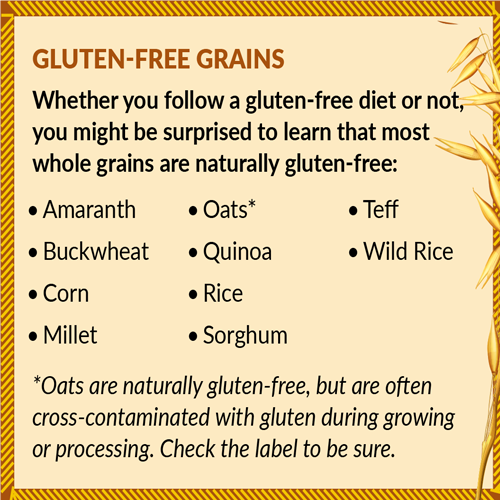
FIRST THINGS FIRST: WHAT IS GLUTEN?
Humans have been eating gluten for eons. Gluten forming proteins are found naturally in wheat (including ancient wheat’s like einkorn, faro, Kamut®, or spelt), barley, and rye. They’re what help dough stretch and bread rise
VERY FEW PEOPLE NEED A GLUTEN-FREE OR WHEAT-FREE DIET FOR MEDICAL REASONS
Celiac disease, which affects an estimated 1-2% of the US population, is a medically diagnose autoimmune disease that requires strict lifetime adherence to a gluten-free diet. Another 0.2-0.4% of Americans are allergic to wheat (but not barley or rye).
WHAT ABOUT GLUTEN-SENSITIVITY?
Many patients who respond well to a gluten-free diet, but don’t test positive for Celia disease, are thought to have “non-Celia gluten sensitivity.” But science is casting doubts on the usefulness of gluten-free diets for people like these. Researchers analyzed data from 10 studies, in which 1,312 adults with “non-Celia gluten sensitivity” were tested for their reaction to gluten.1 In these 10 double-blind, placebo-controlled gluten challenges (where neither the researchers nor the participants knew if they were getting a gluten-free diet or the gluten-containing control / placebo), only 16% of the patients showed gluten-specific symptoms when exposed to the gluten-containing diet, and 40% of them had similar or increased symptoms when on the gluten-free control diet. In other words, gluten is probably not the culprit in most people who think they are gluten-sensitive. Blaming gluten may keep other serious problems from being addressed.
THE DOWNSIDES OF UNPRESCRIBED GLUTEN-FREE DIETS
• In a study that followed more than 100,000 US adults without celiac disease2 for more than 25 years, researchers found that eating gluten was not related to heart disease risk. In fact, the researchers cautioned that avoiding gluten may result in eating fewer whole grain foods, which may in turn increase the risk for heart disease.
• Harvard scientists3 found that people eating less gluten had a higher risk for type 2 diabetes. In fact, those in the top 20% of gluten intake were 13% less likely to get type 2 diabetes over the 30-year study period, even after adjusting for family history, exercise habits, weight, and calorie intake. Why? This may be because glutenfree foods are often made with substitutes like potato starch and tapioca that can make blood sugar spike.
• Gluten-free versions of foods have been shown to have more calories, sodium, and sugar than their regular gluten-containing counterparts, and often carry a higher price tag too.4 Real, whole grain foods are a better choice.
• Self treatment with a gluten-free diet messes up the blood test for celiac disease. Always speak with your doctor before making dietary changes.
• Self treatment with a gluten-free diet messes up the blood test for celiac disease. Always speak with your doctor before making dietary changes.
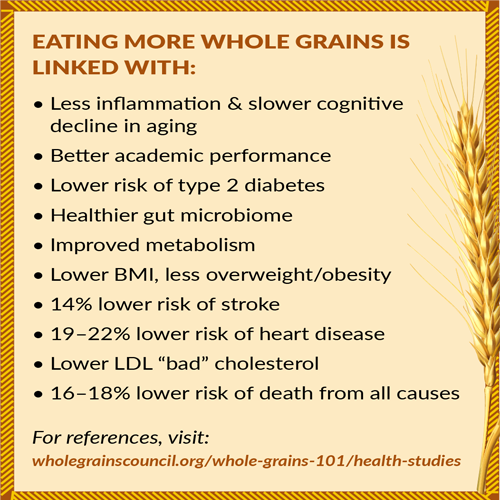
PEOPLE WHO AVOID GRAINS TEND TO BE LESS HEALTHY
Using national health survey data from 9,341 adults in Australia, researchers found that people avoiding grains were significantly more likely to be overweight or obese than those who eat grains, despite consuming fewer calories than grain eaters. Grain avoids also ate fewer fruits, vegetables and less fiber, and were more likely to have a higher BMI and waist size. Our advice: pick meals and snacks full of whole grains, fruits, vegetables and other real foods.
THE EARTH CAN’T SUPPORT A SHIFT FROM GRAINS TO OTHER FOODS (LIKE MEAT)
For millennia, grains have been one of the most important sources of food worldwide. Today, grains provide nearly 50% of global calories,6 and are some of the most earth-friendly foods to produce. Fruits and vegetables, while very nutritious, aren’t as energy dense as grains and are harder to grow, transport, and store for year-round enjoyment. So to make up the necessary calories in fruits and vegetables, much more food would have to be grown. Similarly, raising animals for meat production requires a substantial amount of land and water. For example, beef production uses 10.19 liters of water to produce 1 calorie of food, compared to only 2.09 liters per calorie of fruits, 1.34 liters per calorie of vegetables, and 0.51 liters per calorie of grains.7 Shifting diets away from grains and towards more energy-intensive foods puts an impossible burden on our planet’s precious resources.
CONVENIENT OPTIONS TO BECOMING A WHOLE GRAIN ENTHUSIAST
There are various options available in the market today both online and through brick and mortar retail shops. These provide a convenient option to mill our own flour on each meal basis, which not only provides maximum nutrition but also fantastic taste. These mills come in various options like hand operated manual flour mill, electricity operated flour mill, and solar power operated flour mill. Bring home a domestic flour mill today to reap the healthy benefits of whole grain meal after meal, every day.
Shop with Free Shipping
Provides 24x7 support
100% Safe & Secure
Guaranteed fast delivery options available
